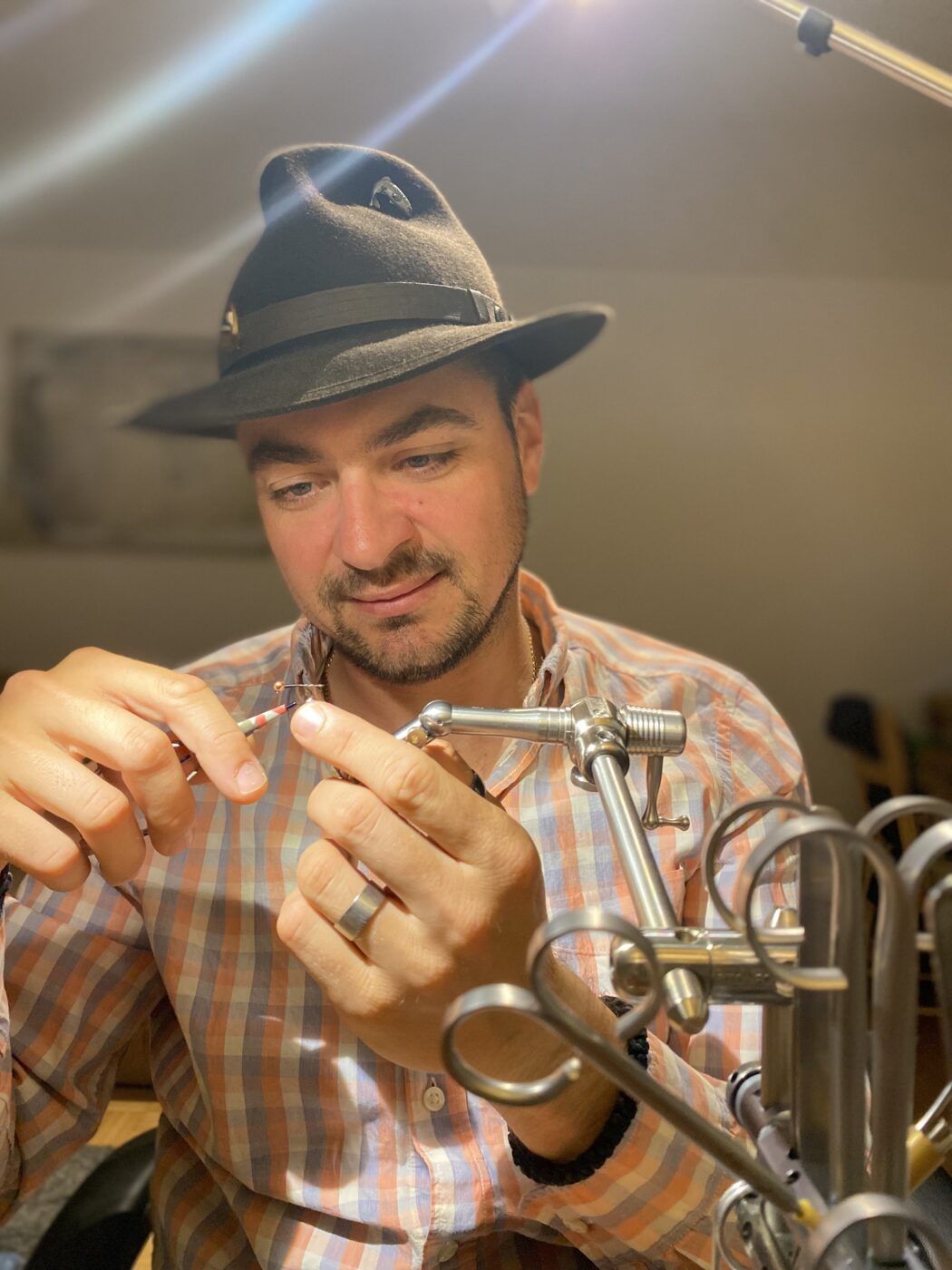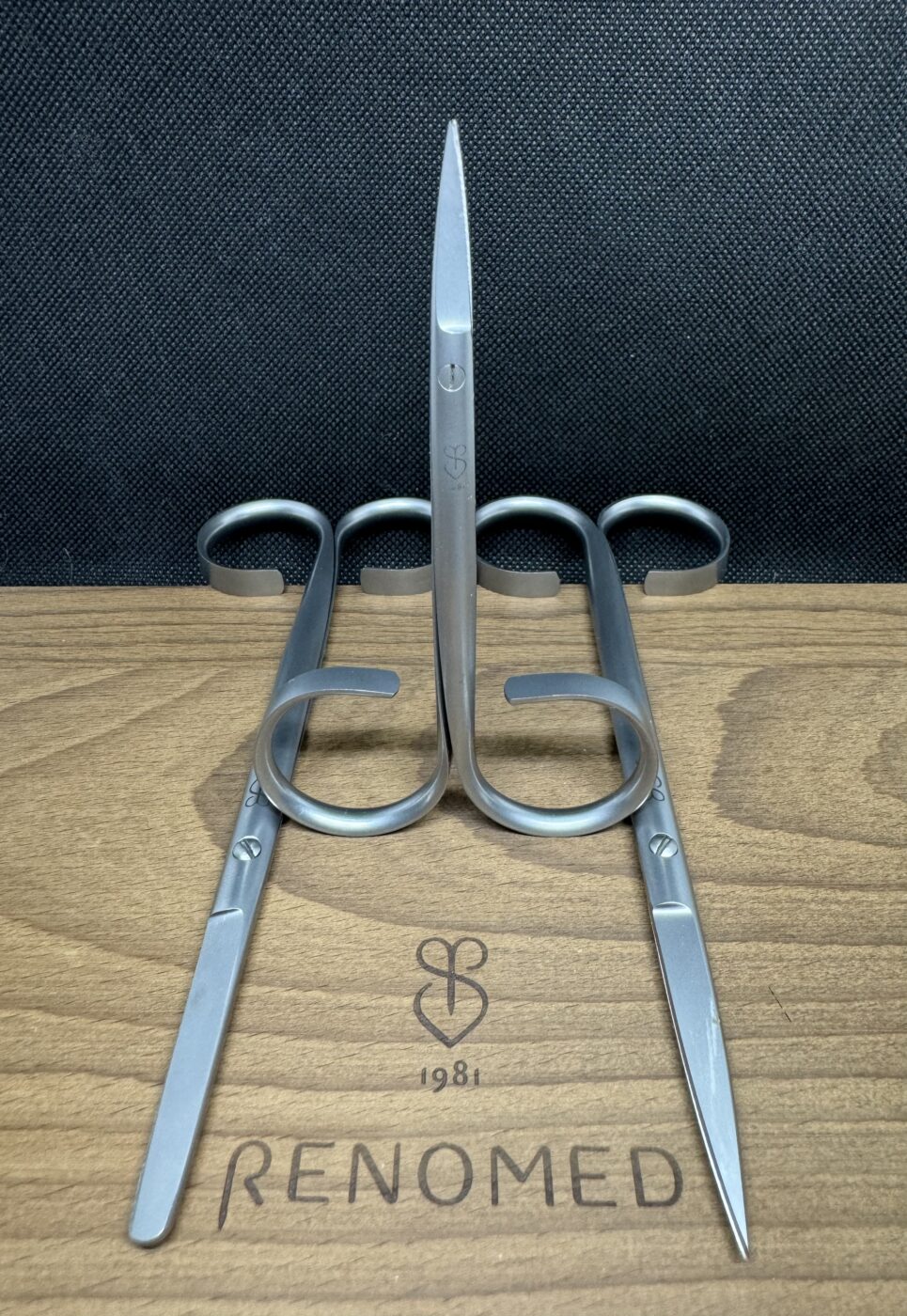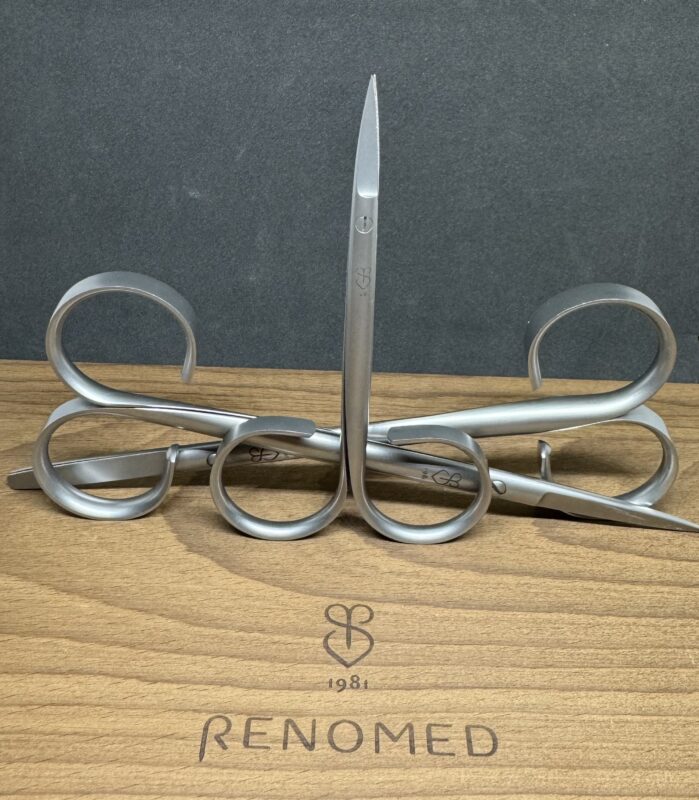However, there is one tool whose quality and importance in fly tying has never been questioned: good, high-quality, durable, and sharp scissors. This “must-have” tool is essential for every fly tyer, from beginners to experienced professionals.Several months ago, I had the opportunity to join the Renomed scissors community, a company recognized as a leading producer on a global scale. This family-owned business, based in Poland, has positioned itself at the top of the high-end scissors producers for fly tying. The quality of the flies you tie is strongly influenced by the quality and type of scissors you use. I speak from experience: before discovering Renomed, I tried various options, but nothing compares to their products.Here are three Renomed models that I personally consider the most practical and useful for all types of fly tying:

Model Fly Tyer – Super CutThis is the perfect all-around tool for everything you need, from small dry flies to large pike streamers. The curved blades allow you to cut with great precision.
Model FS5– These long scissors feature sharp long blades, making them suitable for any kind of saltwater flies. They are particularly amazing for larger pike flies and can handle cutting smaller items in one move of the blade.Cutting longer CDC before clipping has never been easier.
Model FS8– I never thought this kind of blade shape would be useful for fly tying, but it has proven to be invaluable. With a rounded top combined with the Supercut blade, it makes cutting foam a breeze. Additionally, cutting deer hair has never been easier, and I can also use these scissors to cut 0.1mm and 0.2mm metal wire for nymph ribbing.

Search for your local Renomed dealer and invest in a pair of scissors that will enhance your fly tying skills and provide many years of service.
Tight lines & sharp scissors

Comments
[…] the target species. For the beloved trout, the season runs from April 1st through September 30th. Grayling anglers get a slightly longer window of April 1st to October 15th. Those in pursuit of the massive […]
[…] can wade and prospect through miles of riffles, runs and pools, prospecting for native grayling and brown trout amidst the forested hillsides. During winter, hardy anglers also flock to the Kupa to battle the […]
[…] three river systems stand out as particularly renowned fly fishing destinations – the Gacka, Kupa, and […]
[…] three river systems stand out as particularly renowned fly fishing destinations – the Gacka, Kupa, and […]
[…] – Montenegro. Here, along Plavsko Lake and through the crystal clear waters of the Tara, Lim, and Ljuča rivers, awaits you a true fly fishing experience, enriched by the hospitality of the […]
[…] – Montenegro. Here, along Plavsko Lake and through the crystal clear waters of the Tara, Lim, and Ljuča rivers, awaits you a true fly fishing experience, enriched by the hospitality of […]
[…] to a country that will enchant all nature and fishing enthusiasts – Montenegro. Here, along Plavsko Lake and through the crystal clear waters of the Tara, Lim, and Ljuča rivers, awaits you a true fly […]
[…] The Sanica is home to a healthy population of brown trout and grayling 50+, as well as the elusive huchen, a highly prized species among fly fishers. Be prepared for a challenging yet rewarding adventure […]
[…] you’re a seasoned fly fisher or a newcomer to the sport, fly fishing in Bosnia offer an unforgettable angling adventure. With its diverse landscapes, pristine waters, and […]
[…] fly box is essential. Mayflies, stoneflies, and caddis are abundant, especially during the peak hatches in late May and June. As the summer progresses, fish become more selective, and smaller flies in […]